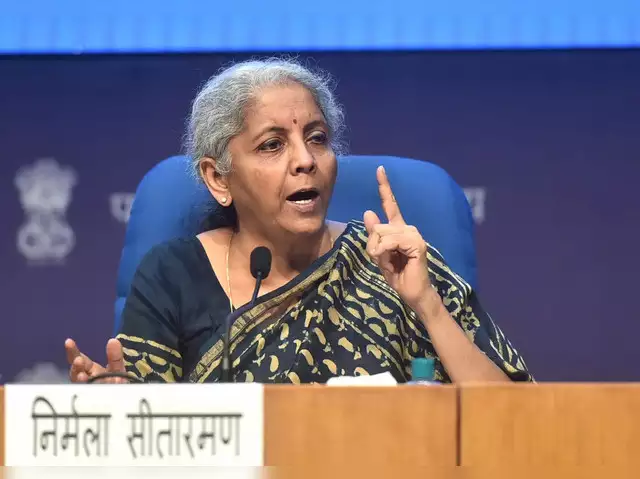Understanding the Significance of India’s Union Budget on Taaza Job Alert
Published On January 24th, 2024

Introduction:
The Union Budget of India is an annual financial statement presented by the government, outlining its revenue and expenditure for the upcoming fiscal year. It plays a pivotal role in shaping the economic landscape of the country, influencing various sectors and addressing critical issues. In this blog, we delve into the significance of the Union Budget, focusing on resource allocation, unemployment reduction, poverty alleviation, wealth disparities, price control, and tax structure.
1. About Union Budget:
In adherence to constitutional guidelines, the Union Budget is a paramount presentation before Parliament, projecting anticipated revenues and expenditures for the fiscal year ahead.
2. Capital Budget:
Breaking down the Union Budget, two major components emerge. The capital budget navigates government-related capital payments and receipts, including loans from the public or the Reserve Bank of India (RBI). This segment encompasses vital expenses such as health facilities, development projects, equipment maintenance, and educational facilities.
3. Revenue Budget:
Focused on revenue expenditure and receipts, the revenue budget plays a pivotal role. Any imbalance between government expenses and receipts results in a revenue deficit, showcasing the intricate financial dynamics at play.
4. Understanding the Importance of a Union Budget:
Delve into the significance of the Union Budget, as it becomes a linchpin in India’s economic narrative, striving for rapid, balanced growth, social justice, and equality.
a. Ensure Efficient Allocation of Resources: Optimal resource allocation takes center stage, a critical element in maximizing government profits and advancing public welfare.
b. Reduce Unemployment and Poverty: A key objective involves eradicating poverty and fostering employment opportunities to fulfill citizens’ fundamental needs in areas like food, shelter, clothing, healthcare, and education.
c. Reduce Wealth and Income Disparities: Through strategic use of subsidies and taxes, the budget acts as a catalyst in leveling income distribution, imposing higher taxes on the affluent to mitigate income disparities.
d. Check on Prices: The Union Budget becomes a stabilizing force, managing economic fluctuations by controlling inflation and deflation. In times of inflation, surplus budget policies come into play, while deficit budget policies are enacted during deflation.
e. Change in Tax Structure: Witness the budget’s transformative impact on the financial landscape, dictating alterations in direct and indirect taxes. This includes changes to income tax rates and brackets, exemplified by the determination of the income tax slab for the fiscal year 2020-21.
Conclusion: Unravel the layers of India’s Union Budget, a pivotal instrument in sculpting the nation’s economic course. Beyond numbers and figures, it stands as a testament to the government’s commitment to prosperity, equity, and the well-being of its citizens. Stay informed, as the Union Budget continues to shape India’s economic future.
Important Questions Related to Exams
- General Understanding:
- What is the constitutional mandate regarding the presentation of the Union Budget in India?
- Explain the fiscal year and its duration as per the Union Budget.
- Components of Union Budget:
- Differentiate between the capital budget and revenue budget. Provide examples of items included in each.
- Capital Budget:
- How does the government finance capital receipts in the Union Budget?
- Enumerate the types of expenses covered under the capital payments in the budget.
- Revenue Budget:
- Define a revenue deficit in the context of the Union Budget.
- Why is maintaining a balance between government expenses and receipts essential in the revenue budget?
- Significance of Union Budget:
- Discuss the objectives of the Union Budget, emphasizing its role in promoting economic growth, social justice, and equality.
- Elaborate on how the budget contributes to reducing unemployment and poverty in India.
- Resource Allocation:
- Why is efficient resource allocation crucial for the success of government programs and initiatives?
- Provide examples of sectors that receive significant resource allocation in the Union Budget.
- Wealth and Income Disparities:
- How does the Union Budget address wealth and income disparities through taxation policies?
- Explain the concept of subsidies and their role in reducing economic inequalities.
- Price Control and Economic Stability:
- Discuss how the Union Budget helps in controlling prices and maintaining economic stability.
- Explain the difference between surplus budget policies and deficit budget policies.
- Tax Structure Changes:
- How does the Union Budget influence the tax structure in India?
- Provide examples of recent changes in the income tax structure as determined by the budget.
- Overall Impact:
- Summarize the overall impact of the Union Budget on the economic development and well-being of the country.
- How does staying informed about the Union Budget empower individuals and businesses in making financial decisions?
- Financial Analysis Platforms:
- Investopedia: Offers comprehensive articles and analysis on economic and financial topics, including budget-related matters.
- Livemint: Covers a wide range of economic and financial news, including budgetary updates.
